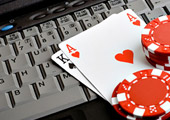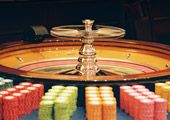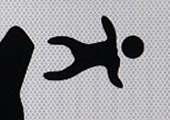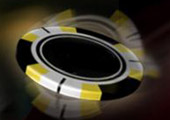A lesson in blackjack rules
| Published on March 16, 2011

Each hand begins with the player being dealt two cards face up, and the dealer with one card face up. Each player at the table has the option to attempt to improve their hand by drawing as many cards as they want till they decide to either stay or go burst. While players can, at least theoretically, stay on a hand as low as two (two aces) they rarely do.
On the other hand the dealer has to always draw till their hand reaches seventeen or over. Even if all the players at the table are holding hands with a value of seventeen or over, the dealer cannot draw another card. Players whose final hand is equal in value to the dealer's final hand break even. This is known as a stand-off and players who achieve this dubious triumph live to fight again by having their stake money returned.
Once each player has their two cards in front of them, then working from left to right, they do what they need to do to improve their hand. There are a number of options for a player to improve their position depending on the cards that they have been dealt. The first option is to split a matching pair, which can be aces, deuces, threes, sevens, eights and nines.
Splitting aces can be problematic because the player is only allowed one card per split pair, in other words if they draw a two or three or even another ace, they have to stick, meaning that the dealer has to burst for them to win the hand. Twos and threes offer a lot more possibilities because the player can draw as many cards as they want, and can even arrive at a situation where they can also double down on one or both of their split pairs, making for a quadruple increase on their original bet.
Splitting sevens, eights and nines also offer the same possibilities, but in most cases players will be happy to see two face cards come out, especially if the dealer is holding a five or six, cards that the bank is statistically more likely to burst on. The same rule applies when a player draws a hard nine, ten or eleven. They can double their bet. If they do so, they are allowed to draw just one card which hopefully will make for a higher hand value than the dealers. With the exception where the dealer's first card is an ace, once all the players at the table have finished splitting, doubling, drawing and staying it is the turn of the dealer to play out the bank's hand.
If their face card is an ace, any players who have drawn blackjack (ten or face card along with an ace) will be allowed to bet insurance. That means placing half their bet and if the bank does draw blackjack then the player have a standoff on their original bet, and lose their insurance. If the bank fails to hit blackjack, the player's blackjack pays 6-4 and covers the cost of the insurance bet.
Related articles
Bonus Newsletter!
Receive our latest freebies in your box!
- 1003 Online casinos
- 897 No download casinos
- 326 No deposit casinos
- 37 Mobile casinos
- 301 Bitcoin casinos
Latest news
Bitcoin gaming websites are here!
 The new era of the online gambling has begun, now you can play with Bitcoins and many other cryptocurrencies, and get instant withdrawals!
The new era of the online gambling has begun, now you can play with Bitcoins and many other cryptocurrencies, and get instant withdrawals!
Visit our bitcoin casino list.
- 87 Poker rooms
- 143 Online bingo & Skill games
- 79 Sportsbooks
- 200 Gambling news
- 30 Free games
- 14 Affiliate programs














